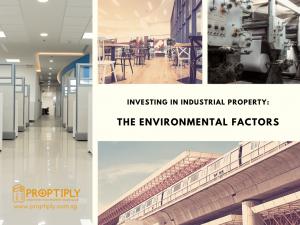
Before you purchase an industrial property in Singapore, it’s important to do proper due diligence to ensure that you select the right unit and are able to maximise the return on your investment. You will need to consider the impact of environmental-related factors, assess the commercial angle of your investment and draw up a tenant checklist to help you to select the right kind of tenants.
In this article, we will address the environmental issues you need to consider in evaluating potential industrial sites and units. Here, we take you briefly through the key factors that should be part of your environmental checklist when it comes to industrial property investment.
1. Location
Easy access to the industrial facility or site is important for both your tenant and their employees. Proximity to public transport makes it easier for you to get a tenant. The tenant’s employees can get to work more easily and it is also more convenient for customers or suppliers to visit the site. The ideal location for your unit should therefore be not too far from MRT stations or bus stops.
2. Amenities
The presence of amenities such as food places can make a difference to the productivity of employees. An industrial unit that is located in an area with a plethora of food choices such as industrial canteens, food stalls or kopitiams can keep employees happier and more productive. Not only do they have more food options, they also do not have to venture too far away to get their meals. If employees have to take a bus or walk quite a distance to the nearest available place for food, this could lead to a drop in productivity. Venturing out in hot weather or when it’s raining would also make matters worse. Therefore, do take a walk around the area you are scouting to check out the eateries around the area.
3. B1 or B2 units
B2 units for heavy industries
B2 industrial properties are for general and special industries involved in “heavier” activities such as manufacturing and production. There is unlikely to be a high turnover for tenants of B2 units. These tenants usually have heavy machinery and equipment and other bulky assets for their operations. They are likely to sign longer leases as it is a hassle for them to move due to their heavy machinery. Therefore, there is less risk involved in buying a B2 unit if the right kind of tenant goes with it. If you have a tenant that uses the place for warehousing activities carrying relatively lighter-weight goods, they can easily move out to a cheaper rented unit.
Nicely-renovated B1 units
On the other hand, if you are looking to invest in a B1 unit which is used for industries engaged in light activities, you should either ensure that the unit is already well-renovated or make plans to ensure that the unit will be renovated to appeal to the right kind of tenants. A well-renovated and outfitted B1 unit would attract tenants which do not want to spend too much on outfitting or the unit itself and they are also thus likely to sign longer leases.